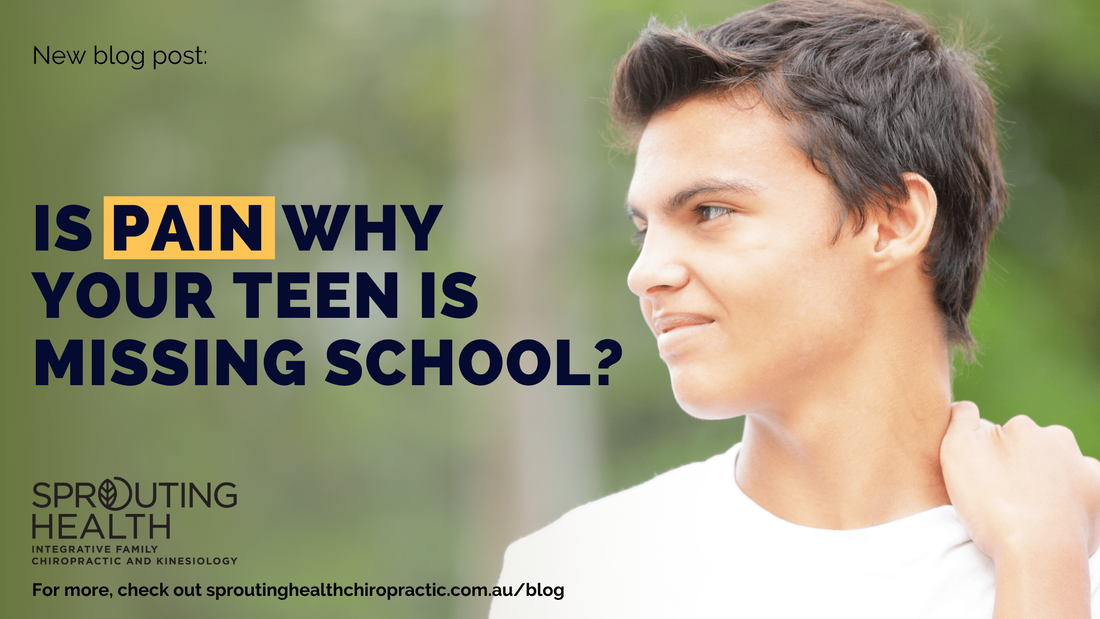|
Teenagers can have various reasons for skipping school.
Not taking laziness into account - chronic illness, musculoskeletal(MSK) pain, anxiety, depression, and poor academic performance are some common reasons for not attending school. A study suggested 1 in 4 teenagers are impacted by MSK pain (e.g. back pain/neck pain), with a higher prevalence and incidence rate in girls than boys.(1) According to the Australian Curriculum, Assessment and Reporting Authority (ACARA), the average attendance rate of teenagers in their school year 7-10 was about 90% in 2018(Pre-Covid). (2) Sometimes being a teenager can be challenging and requires good executive functioning (EF) to complete daily tasks. Recent research found teenagers with chronic MSK pain report significantly greater EF impairment compared to healthy age and gender-matched peers.(3) Musculoskeletal pain reduced Executive Functioning!!! EF impairment is similar to a spinning wheel stuck when our computer runs out of memory or overloaded with multiple tasks. It means a decrease in our working memory (52%), inhibition (45%), and cognitive flexibility (38%).(3) To put it simply, it affects the ability to stay focus at school, less capable of switching from task to task or problem solving, impulsive response, decrease attendance, decrease social abilities, and poorer performance in sports.(3) If your teen participates in sports, there is a higher risk of resulting pain due to injuries (e.g. ankle sprain). Other risk factors for MSK pain including higher BMI, taller height, smoking, negative emotional status, female gender.(4) Oftentimes, pain is developed over a slowly built up stress in our body. Therefore, it is crucial to get to the cause of pain rather than treating the symptoms. At Sprouting Health, we aimed to help people to perform at their best. If your teenager at home often refuses to go to school, experiencing difficulties to focus or is struggling academically, speak to one of our chiropractors and see how we can help manage your concerns! References 1. McBeth J, Jones K. Epidemiology of chronic musculoskeletal pain. Best practice & research Clinical rheumatology. 2007;21(3):403-25. 2. Australian Curriculum AaRA. Student attendance 2018 [Available from: https://www.acara.edu.au/reporting/national-report-on-schooling-in-australia/national-report-on-schooling-in-australia-data-portal/student-attendance. 3. Jastrowski Mano KE, Beckmann EA, Fussner LM, Kashikar-Zuck S. Executive Functioning in Adolescents with Chronic Musculoskeletal Pain. Children. 2020;7(12):273. 4. Huguet A, Tougas ME, Hayden J, McGrath PJ, Stinson JN, Chambers CT. Systematic review with meta-analysis of childhood and adolescent risk and prognostic factors for musculoskeletal pain. Pain. 2016;157(12):2640-56.
2 Comments
Archit Mehta
8/10/2023 09:52:27 pm
I appreciate the real-life examples and case studies you've incorporated into your post. They make the content relatable and applicable. To learn more, <a href="https://40abe6-0ml9kavajfqvf-7w8ay.hop.clickbank.net" target="_blank">click here</a>.
Reply
james
25/11/2023 07:57:14 pm
Investing in activities that stimulate your mind, such as puzzles or learning new skills, is like a workout for your brain—keeping it sharp and resilient for the long run. Prioritize mental fitness for a healthier, more vibrant you <a href="https://6372ddtew1rq5wa9rc79zc5oag.hop.clickbank.net" target="_blank">click here</a> to unlock your potential and start your brain health journey !
Reply
Leave a Reply. |
AuthorBlogs by the team at Sprouting Health Archives
July 2024
Categories |


 RSS Feed
RSS Feed
